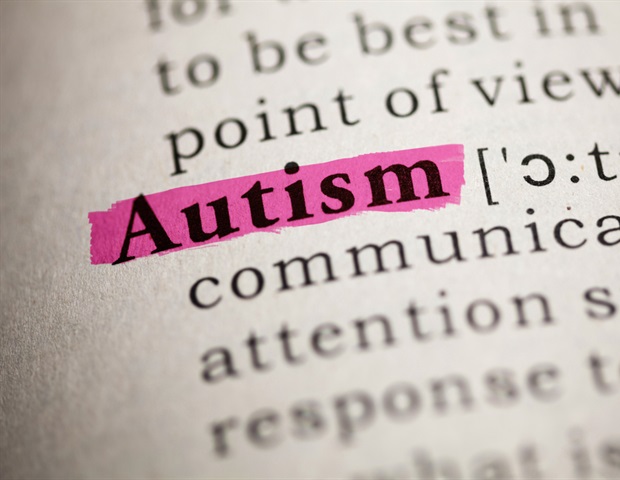Health is related to the outcomes of multiple risk factors that affect physical, mental, and social health. There is, however, little research on how lifestyle-related behaviors affect mental health. A new study examines how such behaviors at the age of 20 affect the prevalence of depression, anxiety, and stress between 22 and 27 years.
 Study: A longitudinal study of lifestyle behaviours in emerging adulthood and risk for symptoms of depression, anxiety, and stress. Image Credit: Prostock-studio / Shutterstock
Study: A longitudinal study of lifestyle behaviours in emerging adulthood and risk for symptoms of depression, anxiety, and stress. Image Credit: Prostock-studio / Shutterstock
Introduction
About one in three people alive today have a mental disorder of some type, making this the most significant single disease category. Even worse, about one in five people are reported to suffer from a mental disorder each year.
Common mental disorders (anxiety and depression) contribute to more disability adjusted life years (DALYs) compared to others. Far more people suffer from these than appear in global reports due to high rates of missed diagnoses, inaccessible healthcare, and symptoms that do not make the threshold for clinical diagnosis. These produce high costs in terms of medication, poor health, and lost productivity.
Lifestyle factors like diet, physical activity, smoking, sleep habits, and the use of alcohol or drugs are significant in their contribution to mental illness because they are modifiable in many cases. Moreover, they cluster together, so multiple factors are likely present in the same people. This means they have several concomitant health risk behaviors forming recognizable patterns with synergistic effects on adverse health outcomes.
Earlier research has focused mainly on single factors in selected populations or the association of clustered risk factors with physical health outcomes. The researchers in this study, published in the Journal of Affective Disorders, looked at clustered lifestyle factors during emerging adulthood, identifying latent classes of lifestyle behavior.
From 20-29 years, this period is the time of emerging adulthood and has been shown to be peculiarly vulnerable to common mental disorders and high-risk behaviors. This could be due to the quick and repeated or frequent changes occurring during this period in many so-called developed societies, as young people leave home, marry, buy homes, take up full-time work, explore financial (in-)dependence, begin to pay off large loans, and have to make their own choices often without proper or adequate guidance or support from family, friends or the community.
Poor lifestyle choices, whether dietary, exercise-related or smoking- or drug-related, arising at this time are often carried forward into later adulthood and contribute to poor health. This motivated the current study, exploring the prevalence of symptoms of depression, anxiety, and stress in association with related risk factors such as a sedentary lifestyle, diet quality, smoking, and the use of alcohol, cannabis, and other drugs, operating in early adult life, in emerging adults at two time points, namely, at 22 and 27 years of age.
The data came from the Western Australian Pregnancy Cohort (Raine) Study, covering individuals from gestation to adulthood. About 600 individuals were included in the current study, with the outcome data being available for 415-458 people depending on the specific variable.
Over 81% were in paid employment, were physically active, did not smoke, drank lightly or not at all, and did not use drugs. However, diet quality was very poor. The prevalence of common mental disorder symptoms was within expected limits.
What did the study show?
The results show that the subjects could be categorized into three types based on their lifestyle. Class 1 comprised two-thirds of the cohort, who followed mostly healthy lifestyles.
Class 2 included about a fifth, with ~85% being female and ~45% being sedentary in their habits. Again, 42% were frequent cannabis users, and 11% other drug users. In this group, 37% were smokers, with 17% being heavy drinkers and 28% being moderate drinkers.
Class 3, making up a seventh of the cohort, was 99% male, with 100% being physically active but having the poorest dietary habits. These participants showed a high prevalence of alcohol consumption, with a quarter being moderate and ~40% heavy drinkers. Also common was regular substance use (~40% cannabis use and 23% other drugs), and over a fifth were smokers.
The differences could be related to slower impulse control development in males of this age compared to females and peer pressure due to high-risk behavior among sports participants.
Class 1 people were almost all non-smokers, 83% did not drink or drank lightly, and ~70% were not drug users. About 70% were physically active, though diet quality remained poor overall. Both males and females were almost equally represented.
After compensating for confounding factors, Class 2 showed the highest risk for symptoms of depression, anxiety, and stress at 22 years and at 27 years, for anxiety and stress. Individuals in this group had almost three times the odds of reporting symptoms of moderate to severe depression and anxiety, and four times that of moderate to severe stress symptoms, relative to class 1, at 22 years.
At 27 years, class 2 participants showed the same risk increase for anxiety and stress relative to class 1. Class 3 failed to show such associations, perhaps due to the small number of participants, but more probably because males tend not to report mental health symptoms and to show different symptoms missed by conventional assessment measures.
What are the implications?
In this prospective study, differences in mental health symptoms were identified in association with lifestyle behaviors being developed in young adults. The analysis confirmed this group’s high prevalence of health risk behavior, including alcohol and drug use. The results suggest that “most Australian emerging adults are engaged in at least one or more unhealthy lifestyle behaviors.”
This could support potential intervention in this population to prevent these types of mental ill-health. Universal intervention seems to be required, given that healthy and unhealthy behavior patterns were found to co-exist in the same group. Poor diet quality seems to be present universally among emerging adults.
“Taken together, findings support the meaningful co-occurrence of lifestyle risk behaviors in emerging adulthood and indicate the need to move away from a focus on single specific lifestyle behaviors towards a more integrated approach.” Encouraging better parenting skills and practices to produce a greater ability to think maturely and decide wisely on important life matters could be a potentially game-changing intervention, as emerging adults are “a notoriously hard to engage the population.”

 PARENTING TIPS
PARENTING TIPS







 PREGNANCY
PREGNANCY








 BABY CARE
BABY CARE








 TODDLERS
TODDLERS








 TEENS
TEENS








 HEALTH CARE
HEALTH CARE







 ACTIVITIES & CRAFTS
ACTIVITIES & CRAFTS








 CONTACT
CONTACT ABOUT
ABOUT












